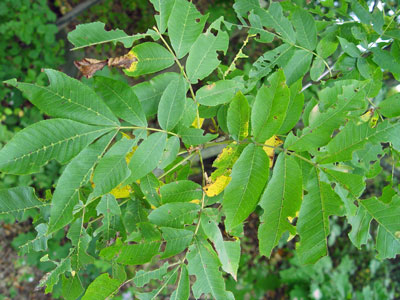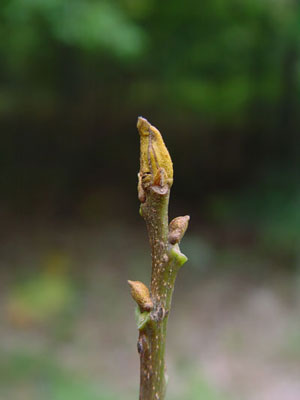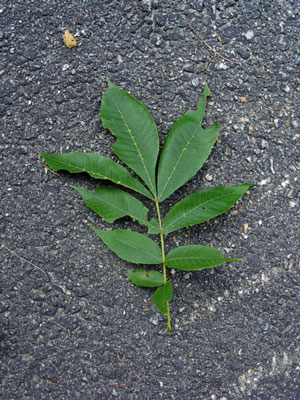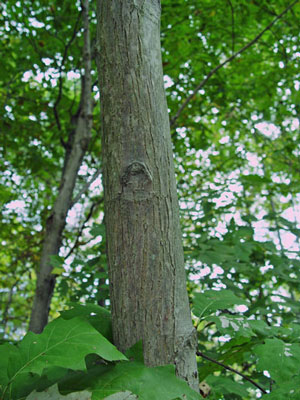DACF Home → Bureaus & Programs → Maine Natural Areas Program → Communities, Plants, and Animals → Rare Plants → Carya cordiformis

Carya cordiformis (Wangenh.) K. Koch
Bitternut Hickory
- State Rank: S1
- Global Rank: G5
- State Status: Endangered
Habitat: Wet to dry woods, streambanks, and swamps. [Hardwood to mixed forest (forest, upland)]
Range: Southern Quebec to Minnesota, south to Florida and Texas.

Aids to Identification: Large trees with scaly (but not shaggy) bark. Winter buds bright orange-yellow. Leaves alternate, pinnately compound with 5 to 11 (commonly 7 or 9) leaflets, the terminal leaflets largest. Fruit rounded, with slightly winged sutures on the husk and splitting to near the middle of the fruit.

Ecological characteristics: Bitternut hickory is a component of the White Oak/Red Oak/Hickory Forest Cover Type on well-drained upland soils, and an associate of the White Oak Forest Cover Type on upland loamy soils in the North Central Forest Region of the United States. Cutting of oak in the former type has increased the proportion of hickory.
Phenology: Flowers appear in spring as leaves open.
Family: Juglandaceae

Synonyms: Carya cordiforms (Wangenh.) K. Koch var. latifolia; Hicoria cordiformis (Wangenh.) Britt.; Juglans cordiformis Wangenh.
Known Distribution in Maine: This rare plant has been documented from a total of 2 town(s) in the following county(ies): York.
Reason(s) for rarity: Bitternut hickory is at the northern limit of its range in Maine.
Conservation considerations: This plant is restricted statewide to southern Maine, and known populations are vulnerable to conversion of their habitat to residential or commercial use. Populations are small and could be eliminated by logging.